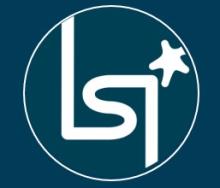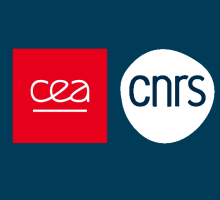Séminaire invité de Jean J. Heremans
Jean J. Heremans, Virginia Tech, Department of Physics (Blacksburg, VA 24061, USA)
Jeudi 6 juillet 2017 à 11h00
Ecole polytechnique - Salle de réunion LMS – 05-1026B
By low-temperature spin-dependent quantum transport experiments, we characterize geometrical effects influencing the measured spin coherence and quantum phase coherence in mesoscopic structures. We also show the importance of device geometry in quantum decoherence phenomena. The findings are of relevance for quantum technologies, and have foundational aspects as well. The work uses a correspondence between dephasing effects due to time-reversal symmetry breaking by magnetic fields, and spin decoherence due to spin-orbit interaction (Aharonov-Bohm / Aharonov-Casher correspondence).
Antilocalization, universal conductance fluctuations and Aharonov-Bohm experiments were used to quantify the spin- and quantum phase coherence lengths. The materials have strong spin-orbit interaction and are heterostructures of the narrow-gap semiconductors InSb, InAs, and InGaAs, and the semimetal Bi with its surface states, which are patterned into narrow channels and quantum interferometers of typical size ~ 1 micron, comparable to the spin and quantum phase coherence lengths. The correspondence appears in transport experiments which average over many trajectories, as in diffusive transport where the average accumulation of geometrical quantum phases can lead to a deletion of interference effects. Magnetic fields break time-reversal symmetry, while spin-orbit interaction is associated with broken spatial symmetries, and both lie at the basis of interesting quantum states of matter. A duality exists between their two associated geometrical quantum phases, namely the Aharonov-Bohm quantum phase involving the interaction of a charge with a magnetic field, and the Aharonov-Casher phase involving the interaction of a spin with an electric field (cast into spin-orbit interaction). The geometrical effects on measured coherence show the similarity of geometrical constraints on the accumulation of the Aharonov-Bohm and Aharonov-Casher quantum phases. Geometrical constraints on the accumulation of an Aharonov-Bohm phase in the finite width of interferometer arms results in a lengthening of a magnetic length, which is a component of an effective quantum phase coherence length and
effectively describes time-reversal symmetry breaking. Similarly in narrow channels, geometrical constraints on the accumulation of an Aharonov-Casher phase in the finite channel width results in a lengthening of spin coherence lengths with decreasing channel width. We also quantify how coupling to the classical environment and geometrical influences on electron-electron interactions impact measured quantum phase coherence (supported by the U.S. Department of Energy, DOE DE-FG02-08ER46532).


